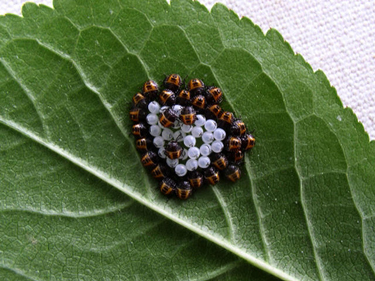WASHINGTON — As warmer spring weather moves into the region, stink bugs may start showing up around your house as they try to escape winter hiding places.
“They’re going to be on your windows, on your front door, on your screens — they’re trying to get outdoors right now and find some food as trees and shrubs come into blossom and fruit,” says University of Maryland College Park Professor of Entomology Mike Raupp.
The pests typically spend winter in protected spots, such as inside attics and underneath siding and shutters. As temperatures begin to rise and the area gets consecutive days of warmer weather, stink bug activity will increase.
Raupp says cool, wet, lingering springs in the past appeared to reduce stink bug populations.
“So we’ve got our fingers crossed that with this cool, wet weather that maybe this year, stink bug populations will also be on the decline,” he says.
Stink bugs are voracious eaters and pose an economic threat to farmers of grapes, orchards, small fruits, ornamental crops and vegetables.
Local researchers working to discover ways to eradicate stink bugs need specimens to study and may even come to your house to pick them up if you’ve collected enough of the critters.
To arrange a pickup of 50 live stink bugs or more, contact Galen Dively via email or call 202-812-9828.
University of Maryland Extension Specialist Galen Dively has specific instructions for the best way to store live sink bugs. Do not put them inside closed confined spaces such as zip lock bags. House stink bugs in plastic food containers or old coffee cans with holes punched in the lid for air and a piece of apple for food.
Watch a video where Raupp demonstrates stink bugs’ survival indoors over the winter months. He says, “in protected locations like boxes stored in my attic, stink bugs survived the Polar Vortex.”







